HI5016 - Tariffs & Import Duties: An Analysis of Australia's Economy
VerifiedAdded on 2024/04/26
|10
|649
|406
Presentation
AI Summary
This presentation provides an overview of tariffs and import duties and their effects on the Australian economy. It begins by defining tariffs and their role in regulating trade flows, reducing imports, and generating revenue. The presentation then discusses different types of tariffs, including specific tariffs, ad valorem tariffs, and compound tariffs, as well as import duties like basic import duty and countervailing duty. It examines the effects of tariffs on industries, such as discouraging foreign competition, increasing costs for industries relying on imported raw materials, and protecting infant industries. The presentation also explores the broader economic impacts of tariffs, including their effects on national welfare, government expenses, exports, consumer prices, and employment. It further addresses the costs and benefits of tariffs, considering their impact on consumer and producer surplus. The presentation concludes by emphasizing the influence of tariffs on supply and demand and highlighting the imbalances in import and export duties.
1 out of 10
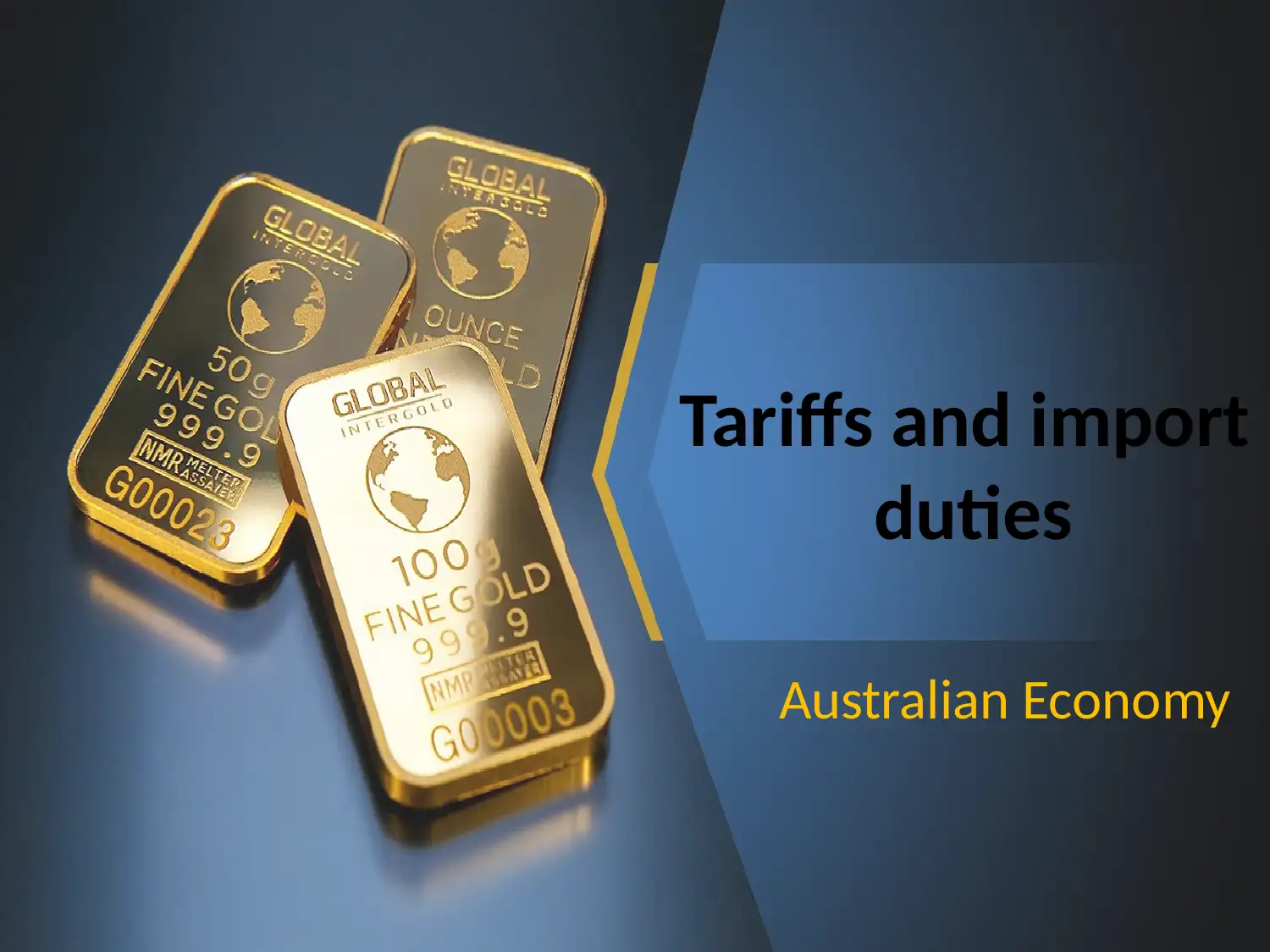
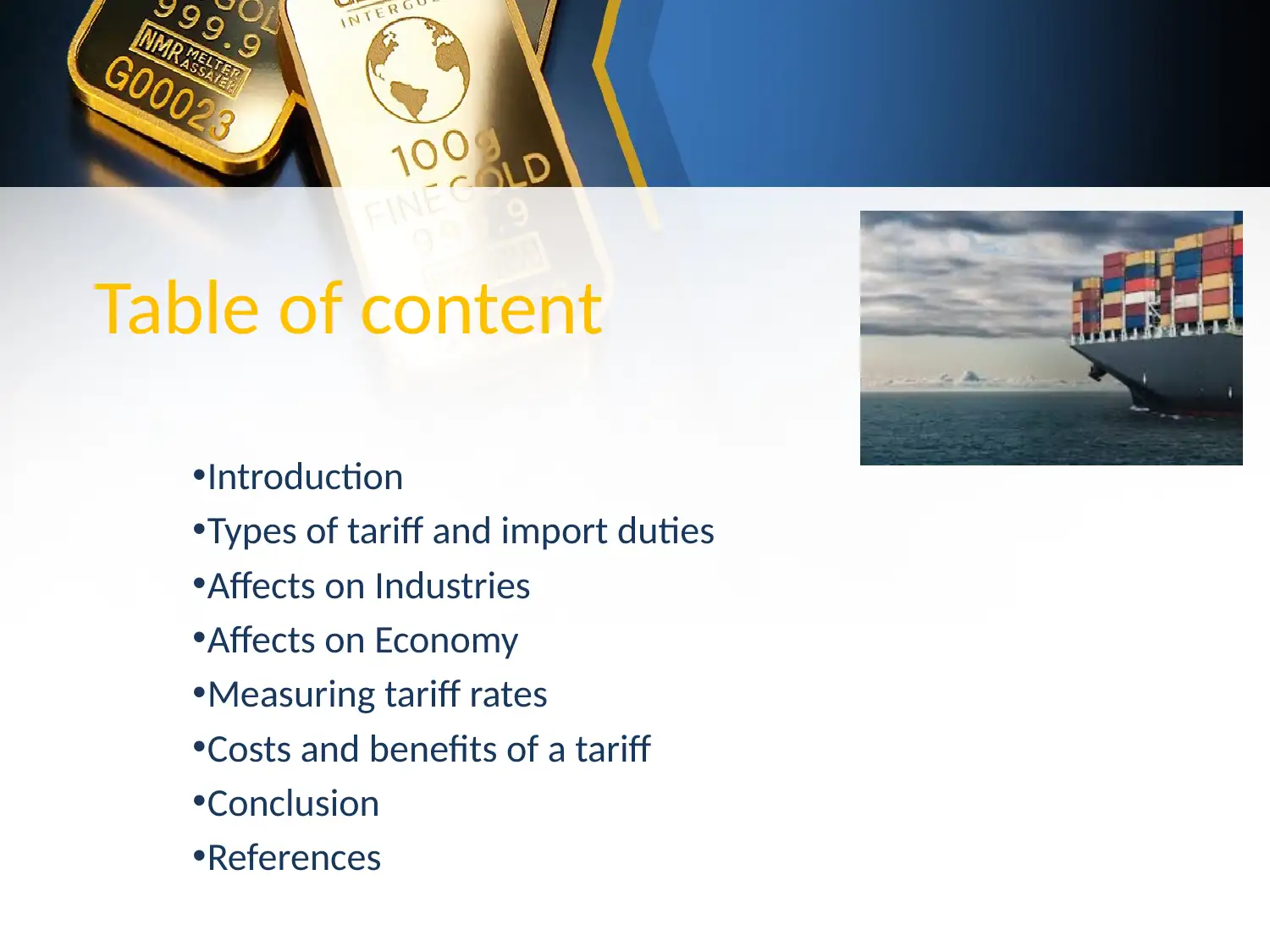
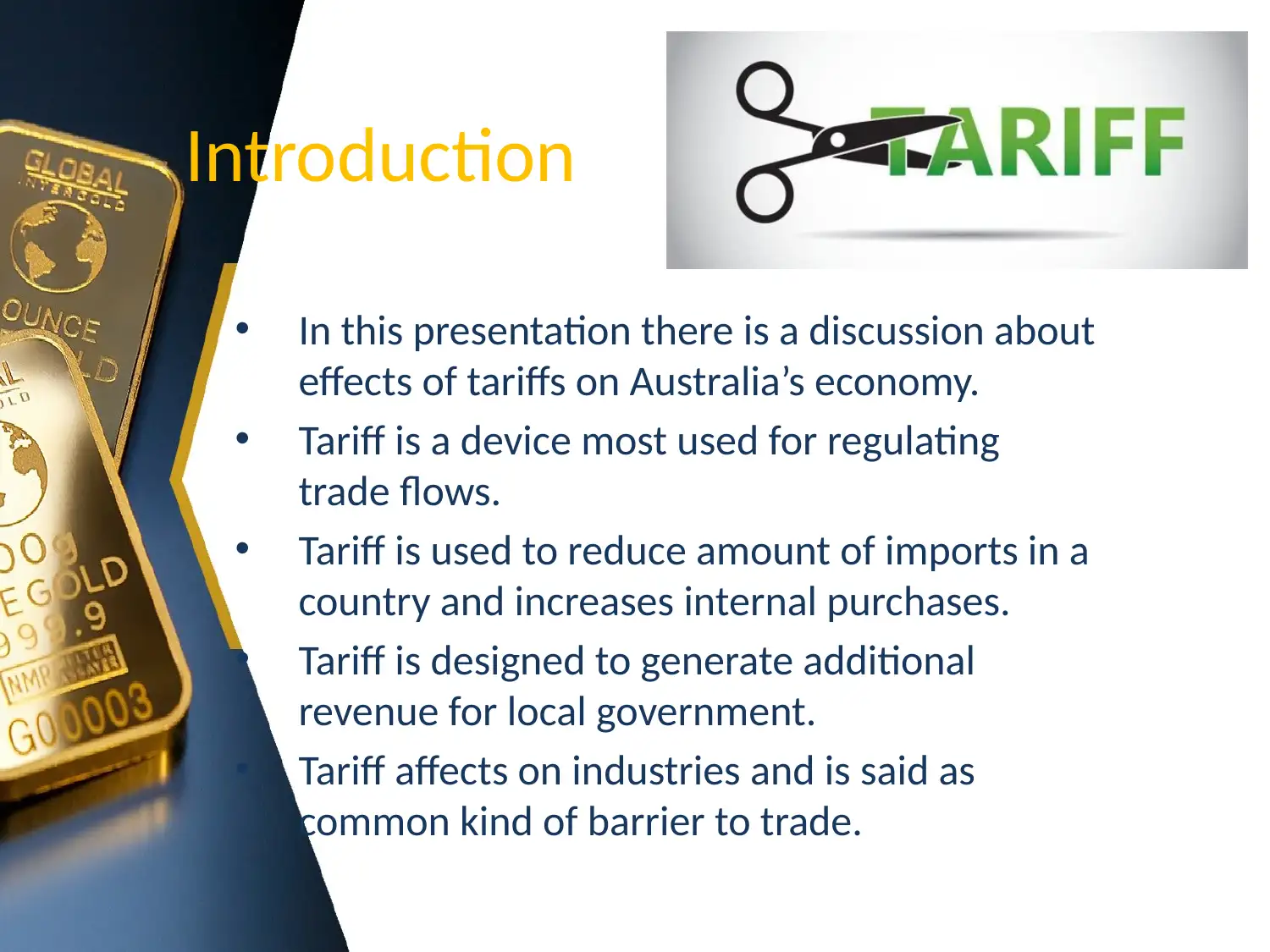

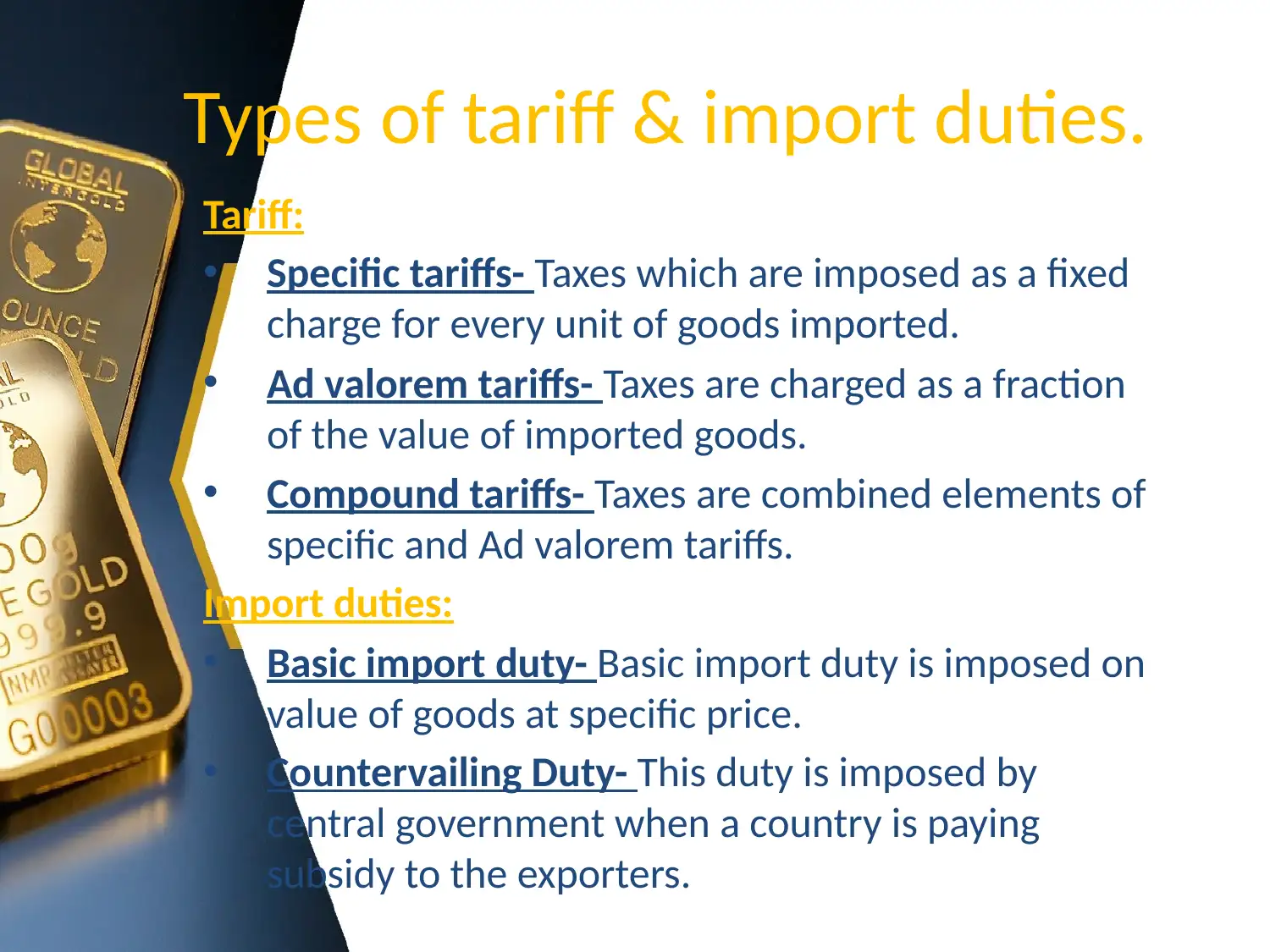
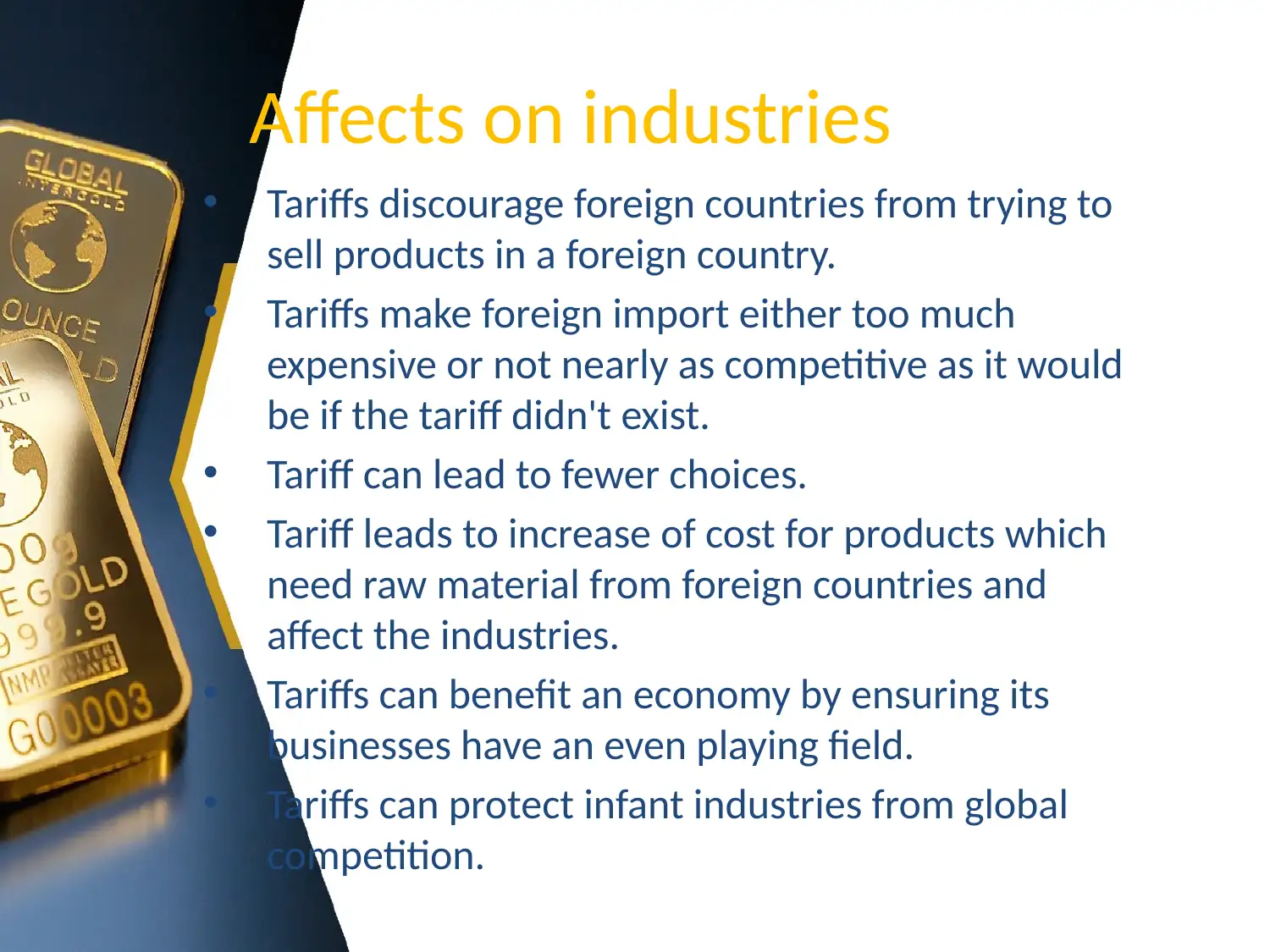
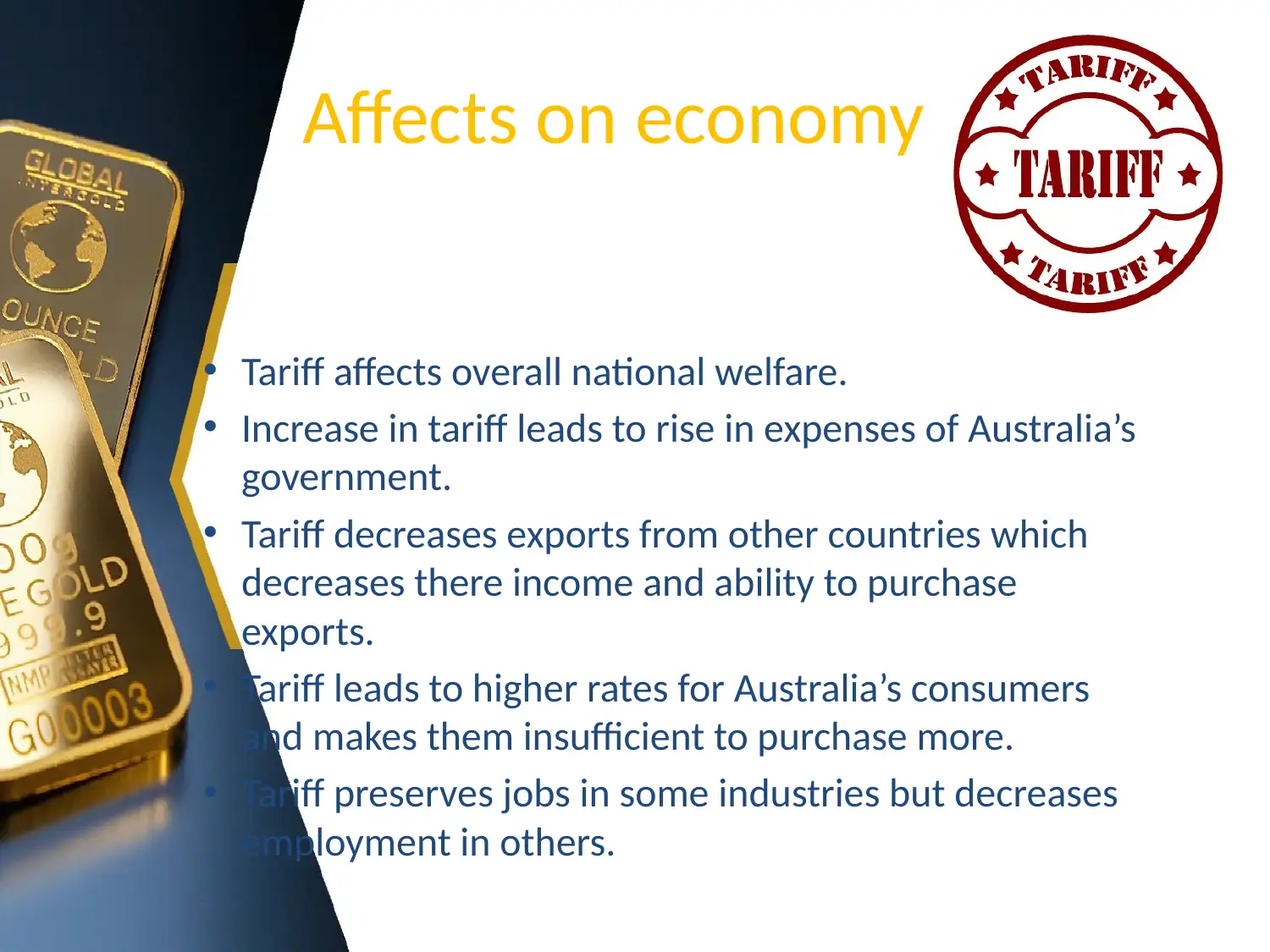
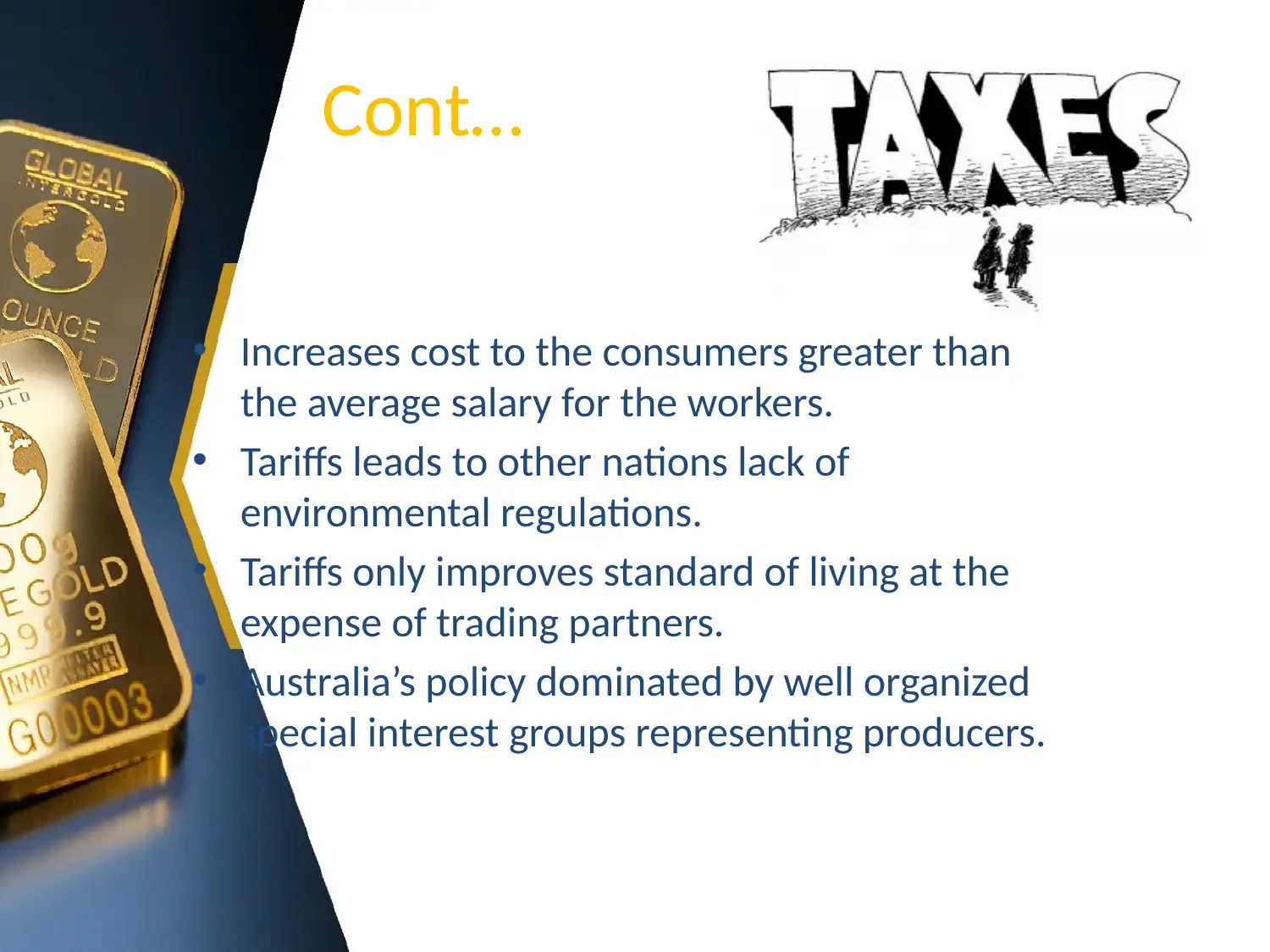
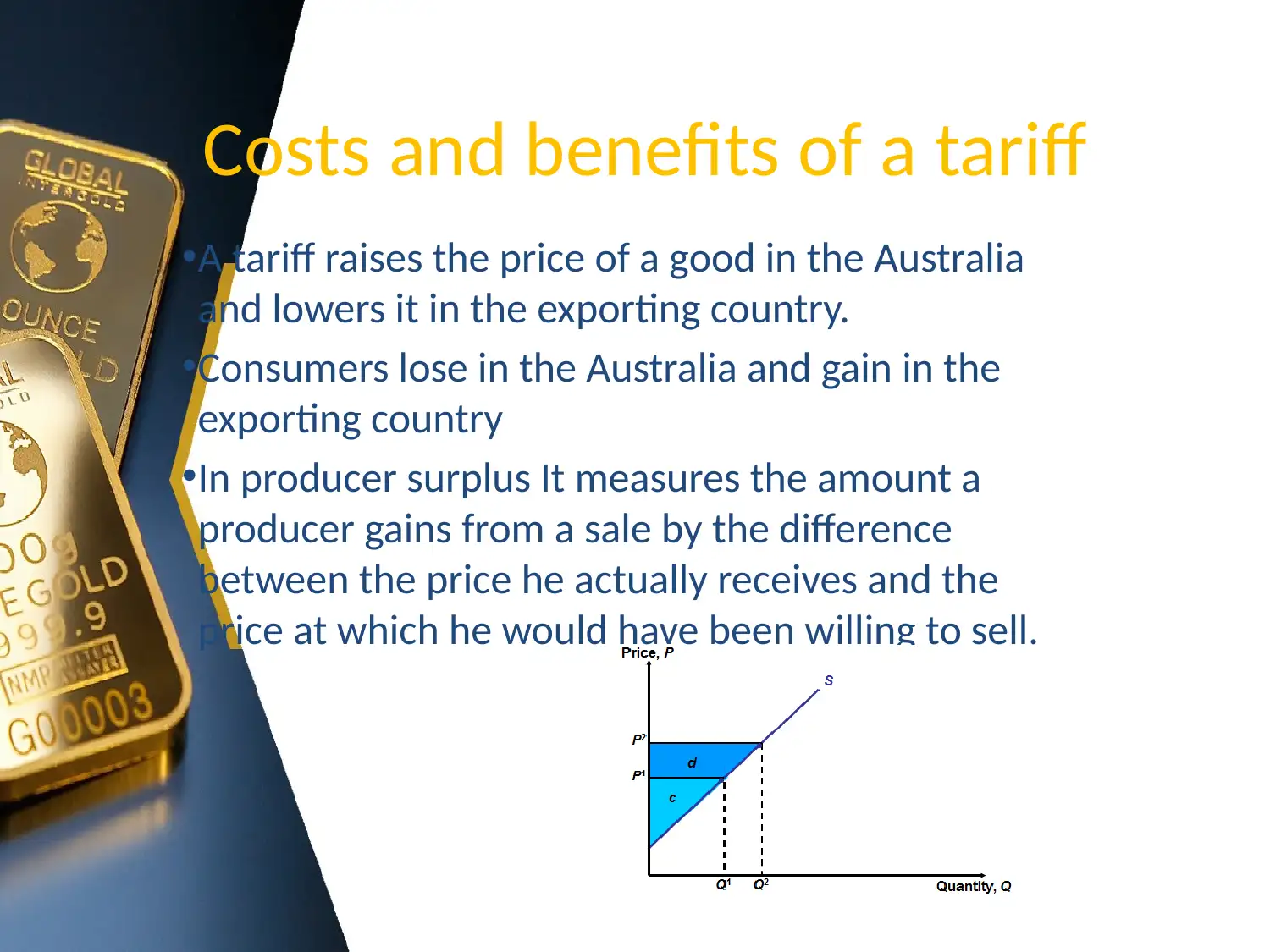
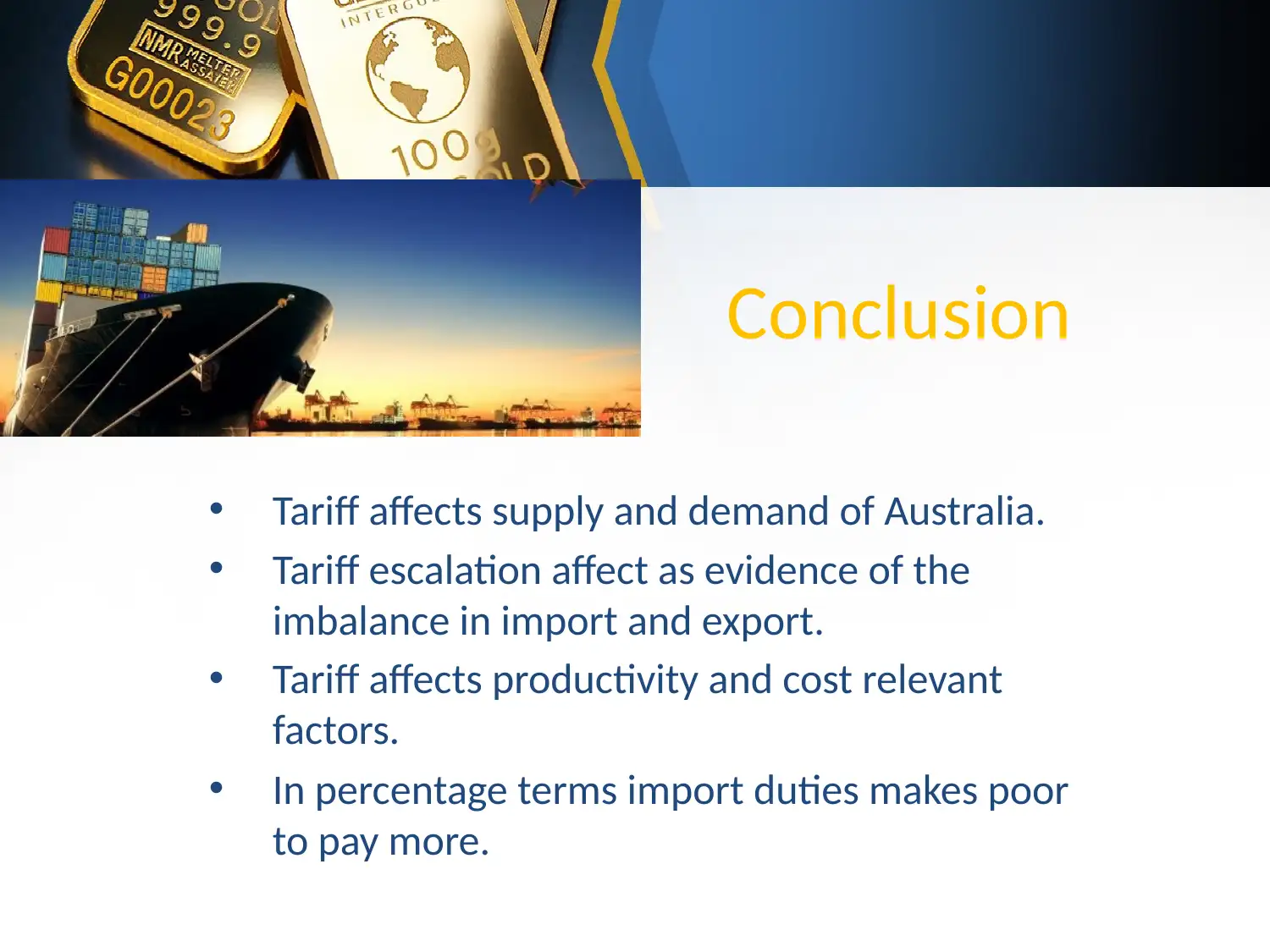
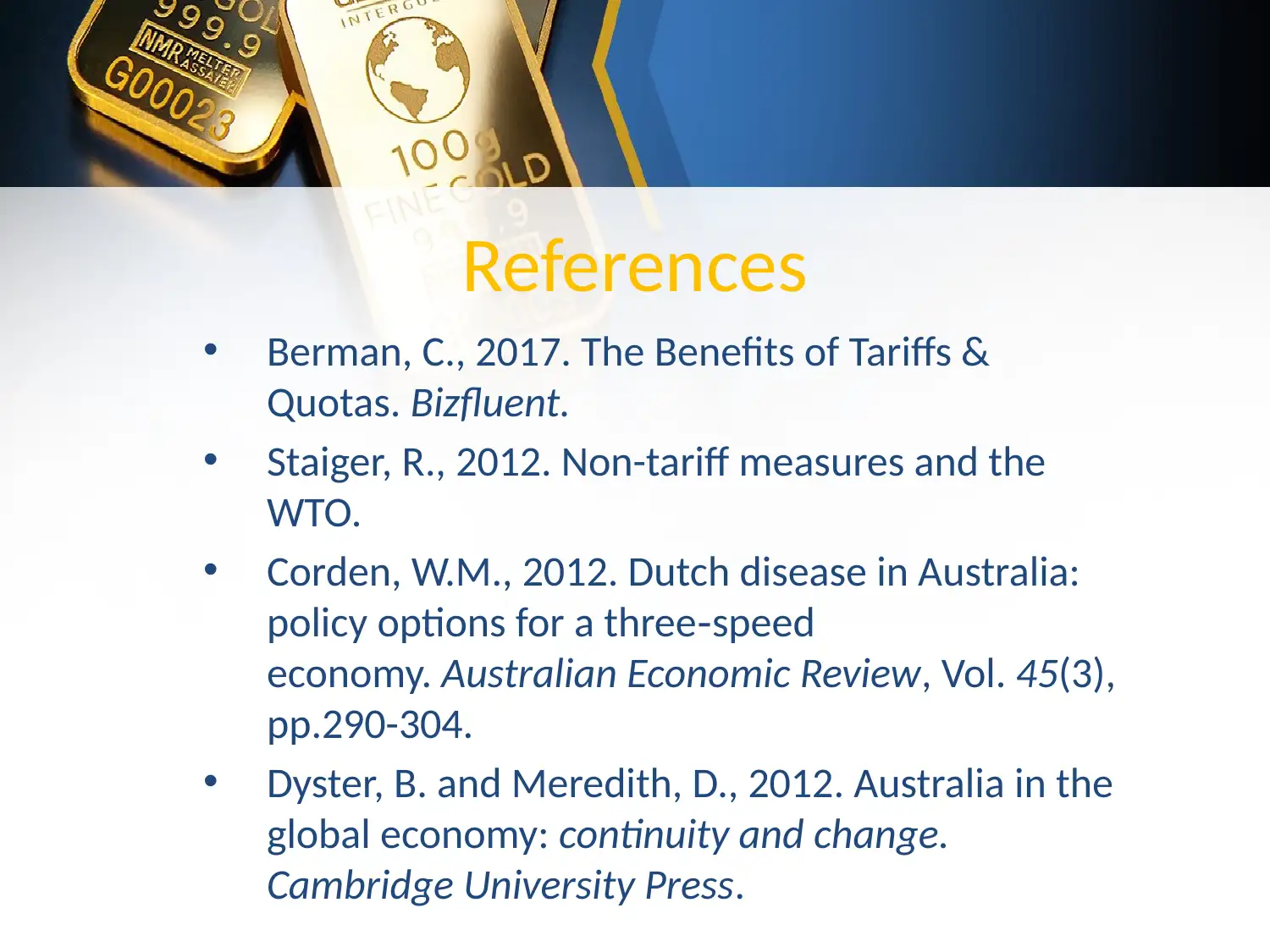






![[object Object]](/_next/static/media/star-bottom.7253800d.svg)